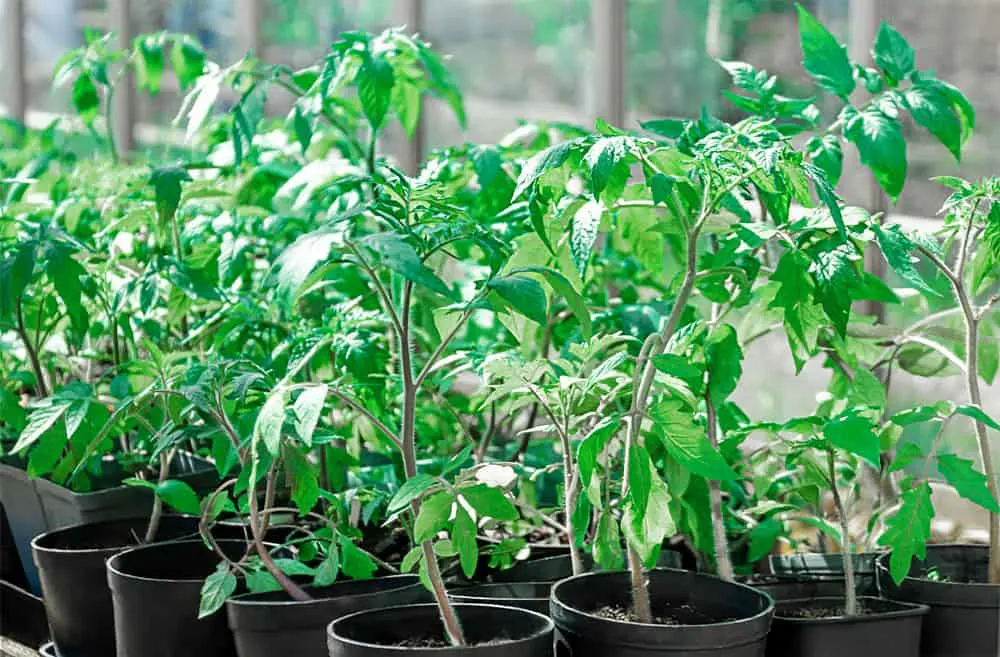
A great tomato harvest begins with the healthiest tomato transplants. Learning how to spot the best transplants at the nursery requires a keen, practiced eye.
Let’s get started with great tips on what to look for. And, we’ll talk about what to avoid.
But first, why not consider growing your tomato plants from seed? It’s significantly cheaper, the varieties available are endless and the satisfaction of eating your first tomato from a plant you’ve nurtured from seed can’t be beaten.
Here’s our guide to planting tomato seeds and nurturing your tiny little plant.
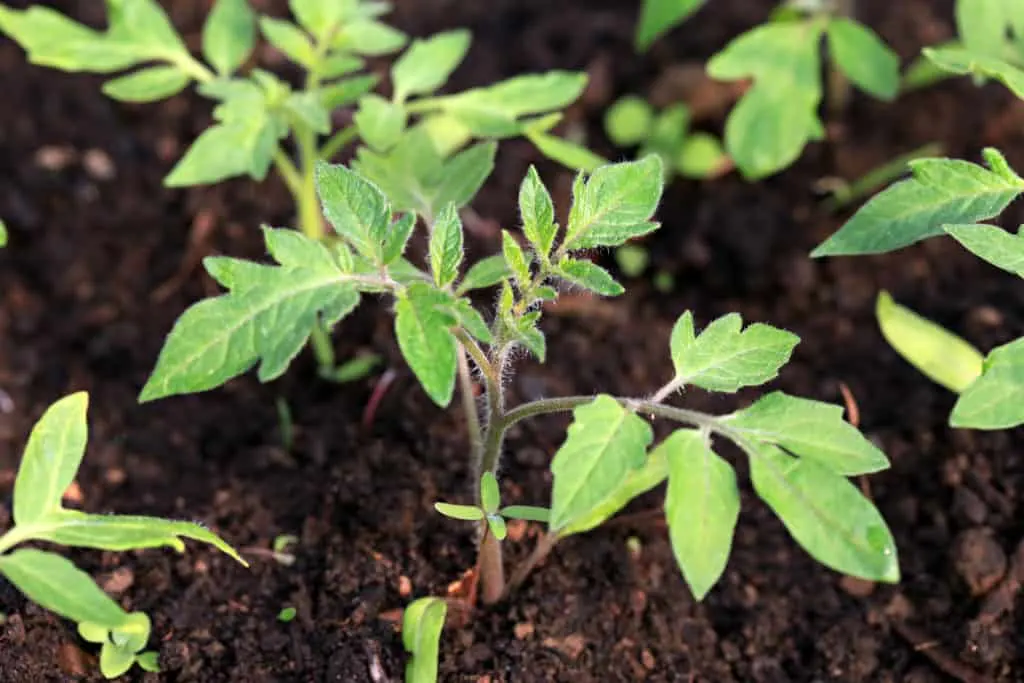
We are preparing for success. Below, we have included some simple checklists to ensure you have everything else lined up. This way your little tomato seedlings have everything they’ll need right through to abundant harvests.
Where to Look for Healthy Tomato Transplants
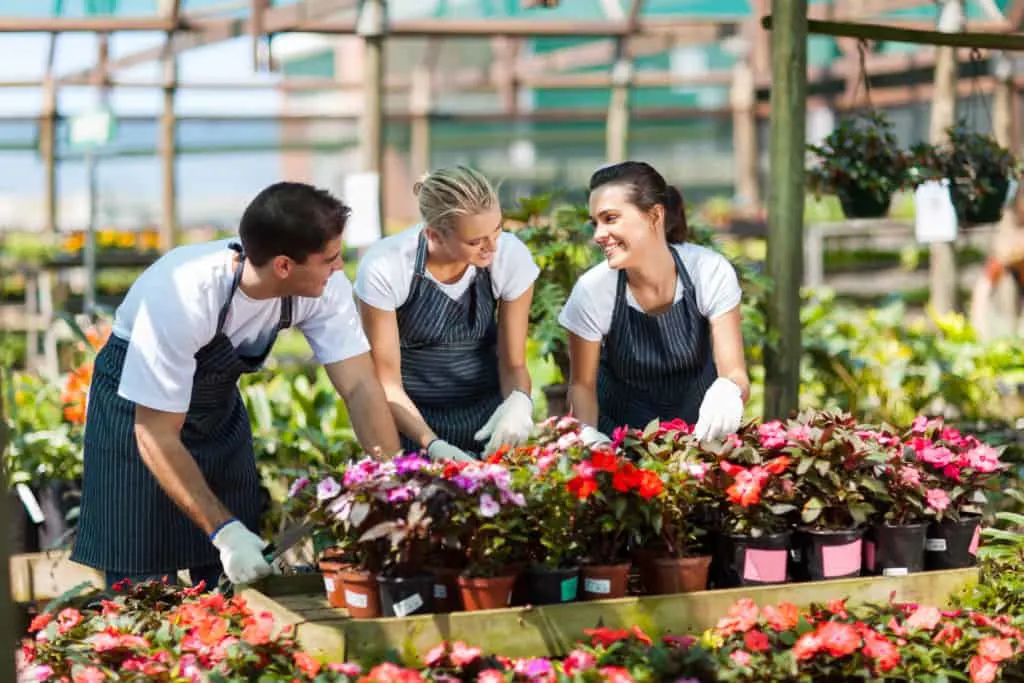
Maybe you have a tried-and-true plant nursery nearby who specialize in a wide variety of tomato plants. This would be an excellent place to start your search.
It is best to find a nursery or greenhouse that is tidy and well-managed. Look for nurseries where most of the plant stock seems happy and healthy. Even on a busy day, plant care will be evident with watering systems and nursery people actively sharing love with the plants.
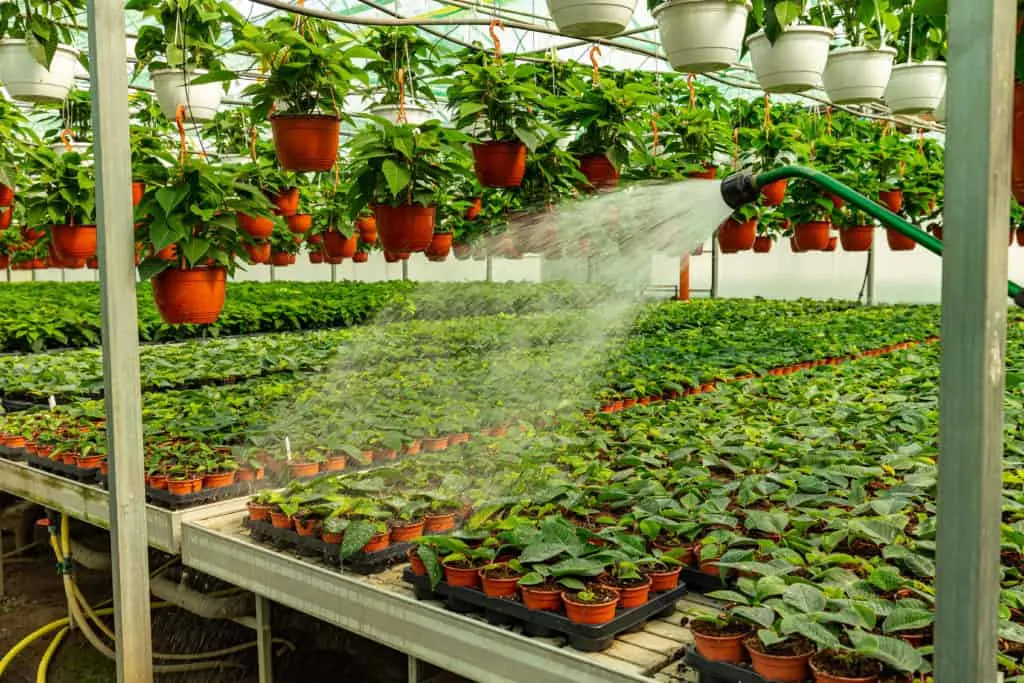
Plant Sellers to Avoid
Nurseries where plants seem to be neglected, dead, or dying are evidently worth avoiding. A lot of work goes into growing healthy plant stock, and there are learning curves for all of us. But, someone trying to make a quick buck by selling mistreated plants my not be worth your money or support.
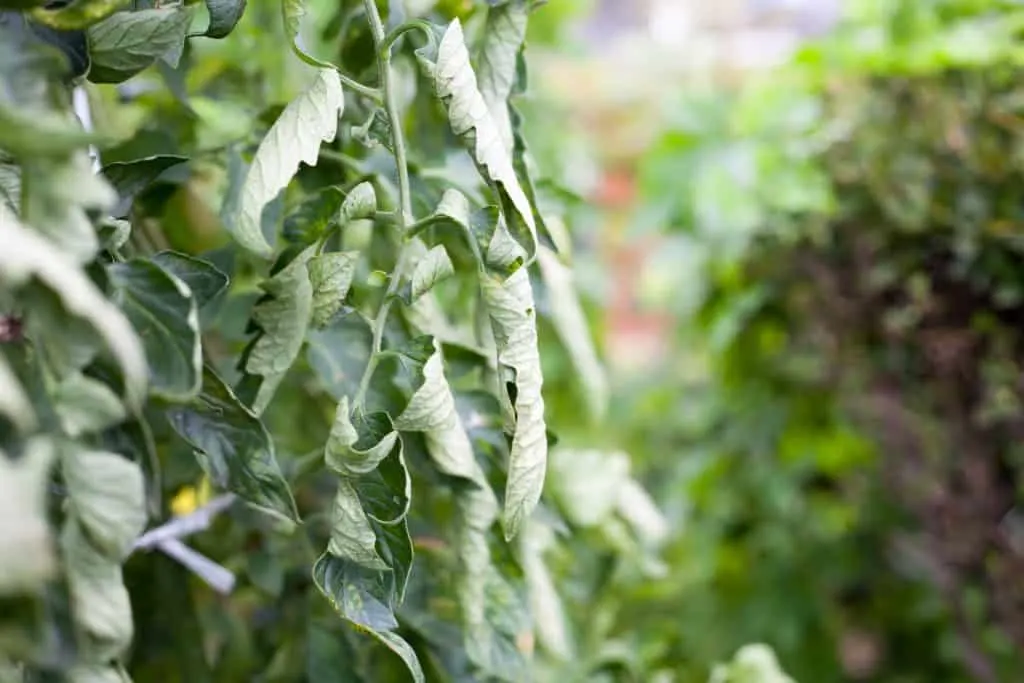
Some nurseries overfeed plants with chemical fertilizers so that they look green and lush at selling time. These plants are often a little too dark green with weak, lush growth.
These plants are often susceptible to transplant shock. They are addicted to the synthetic junk food and struggle without all the fast-acting nutrition. It may be best to avoid these. Or give them a little patience because the tomato seedlings are sometimes delayed while they detox.
What Does the Healthiest Tomato Transplant Look Like?
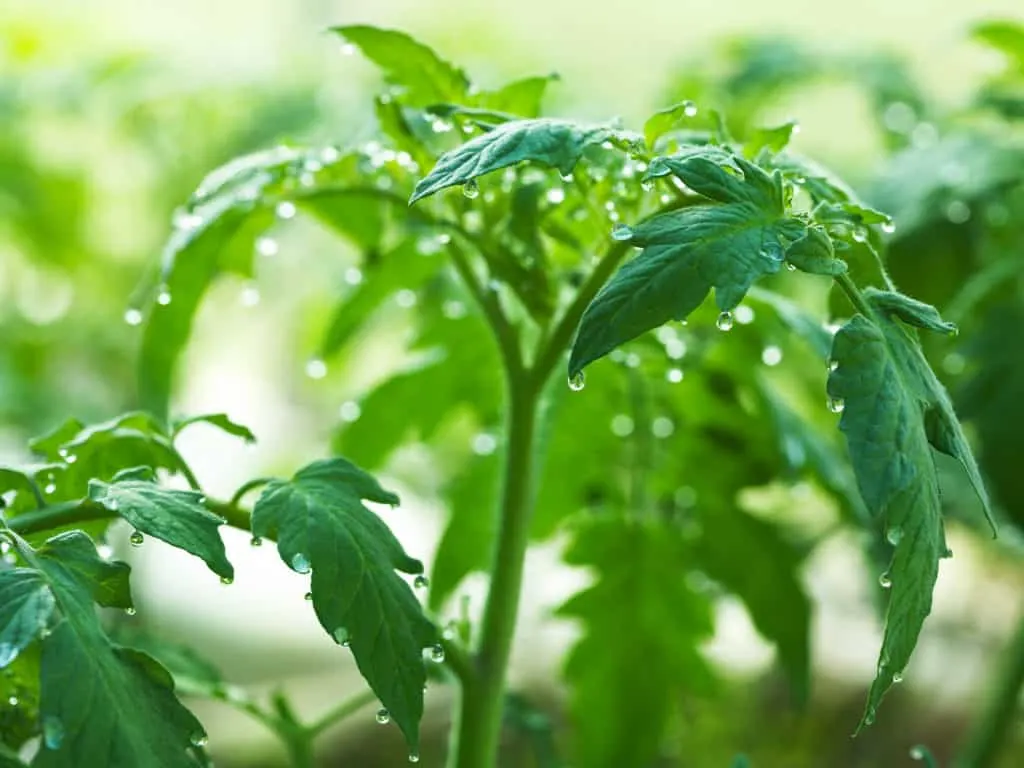
- A healthy tomato transplant is robust.
- It has thick, soft green leaves that are slightly hairy.
- The stems are vibrantly green, strong, and flexible.
- The plant is compact and upright.
- The pot it is growing in is an appropriate size for the plant.
Avoid Tomato Seedlings with the Following:
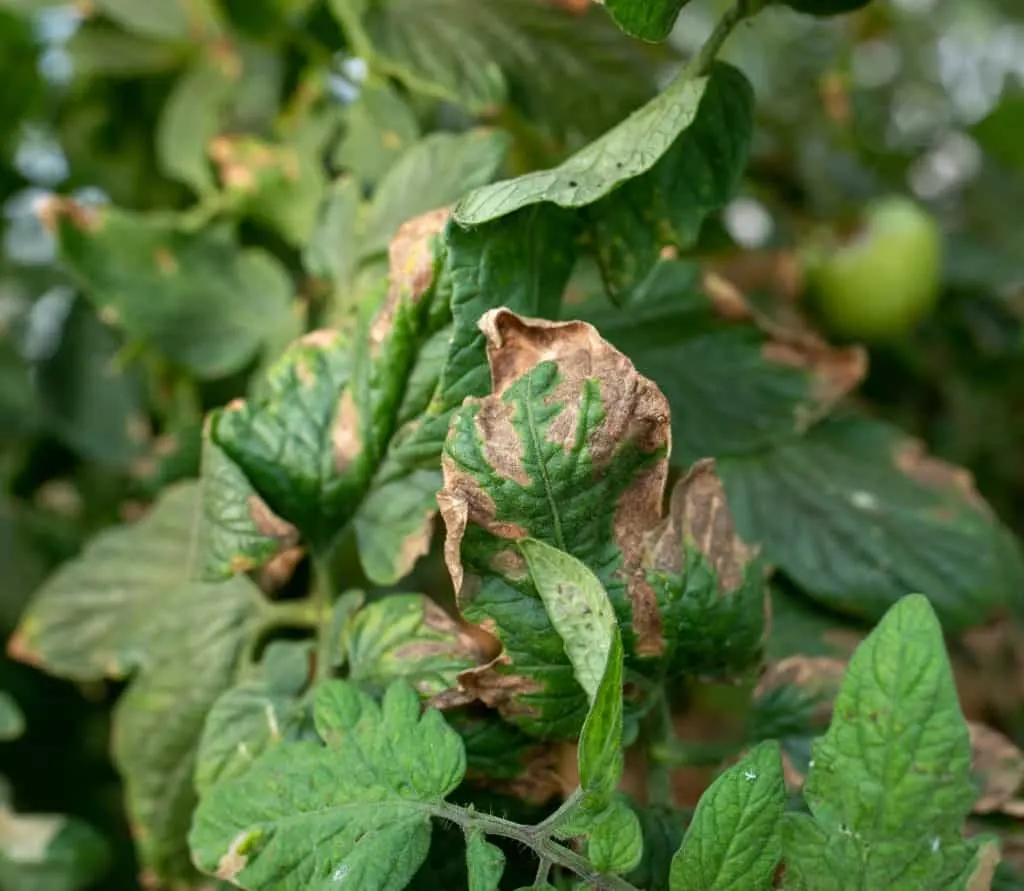
- Yellow or brown top leaves.
- Brown or black spots on leaves.
- Discolored leaf margins.
- Evidence of insect damage, small insects flying around plants, or aphids on undersides of leaves.
- Weak floppy stems.
- Stems with any soft spots or signs of rotting.
- Plants that are leggy and spindly with relatively small leaves.
- Plants that are too large for their pot.
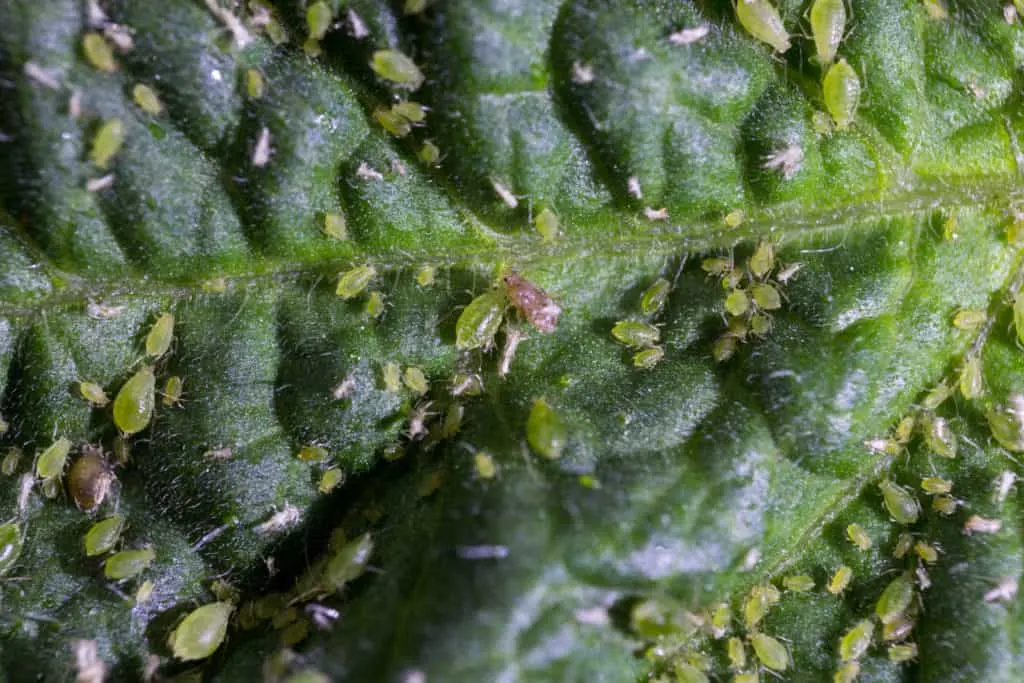
Choosing the Right Size Tomato Transplant
At the nursery, tomato transplants come in a variety of sizes. Keep in mind, some tomato types grow 12 inches only, while many others (indeterminate types with strong supports) can reach 10 to 12 feet high!
Often, there are large tomato plants already in a forever-home container or hanging basket. All you need to do is bring them home and put them in a warm, sunny place where you can water, feed, and harvest the tomatoes!
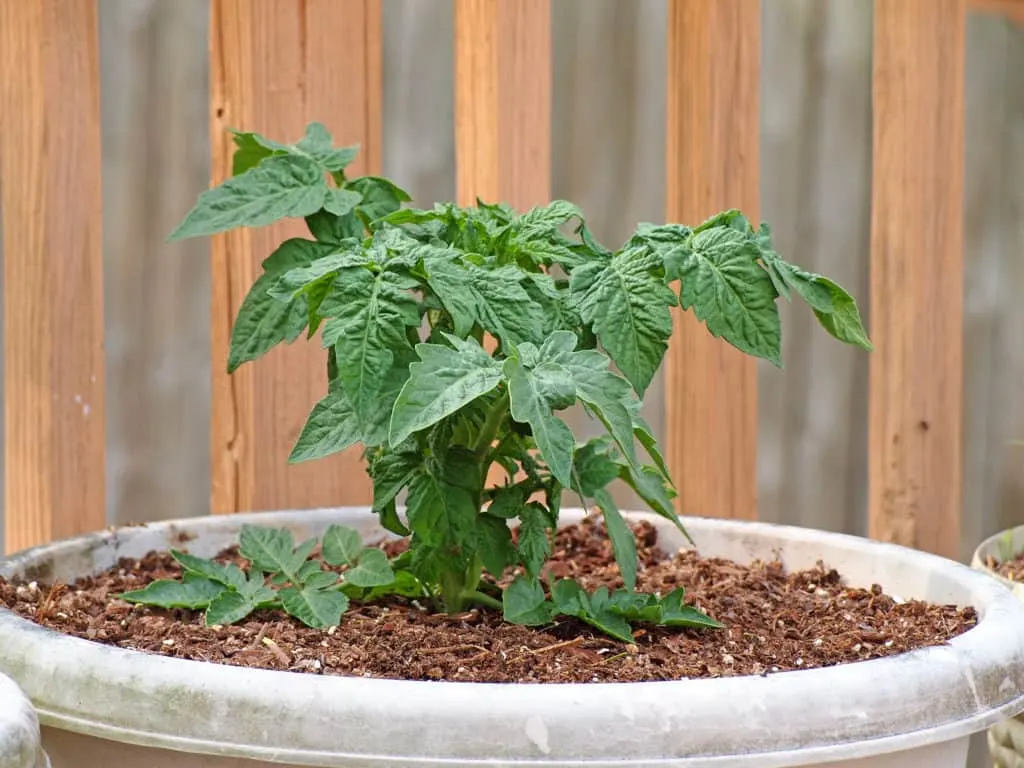
Next, tomatoes may be available in 4 to 8 inch containers. These toms are a little larger and may bear fruit sooner. If you have a short season or you are growing outside, this might be a wonderful option to jumpstart your tomato patch.
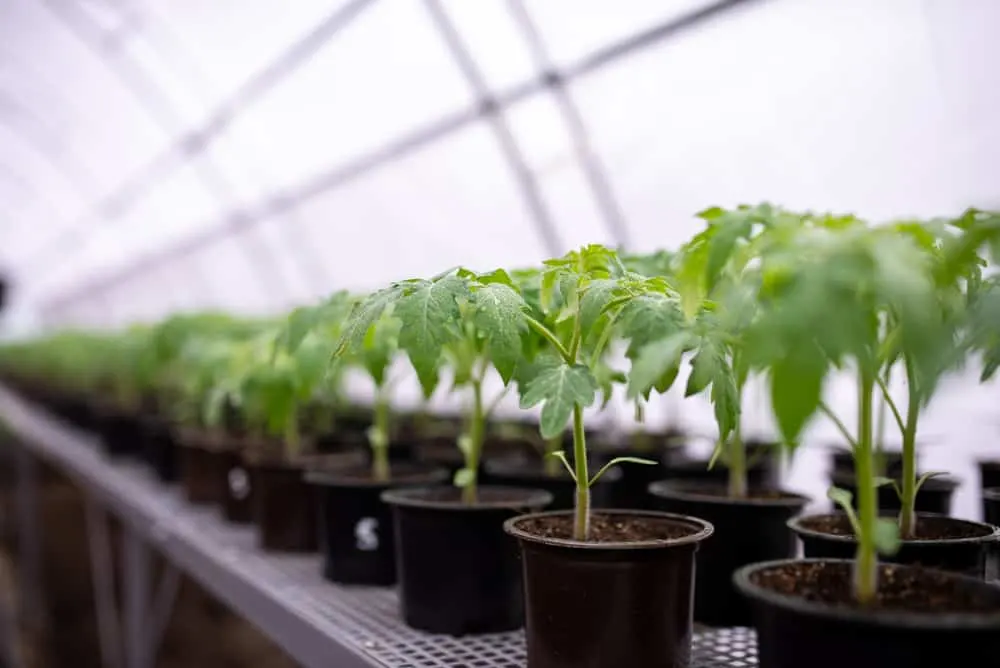
Tomatoes are also available in 4 or 6 pack size. These plants are smaller, in cells that are usually under 2 inches. If you are planting a lot of tomato plants or want 6 of all the same kind, this is a great, often affordable, option.
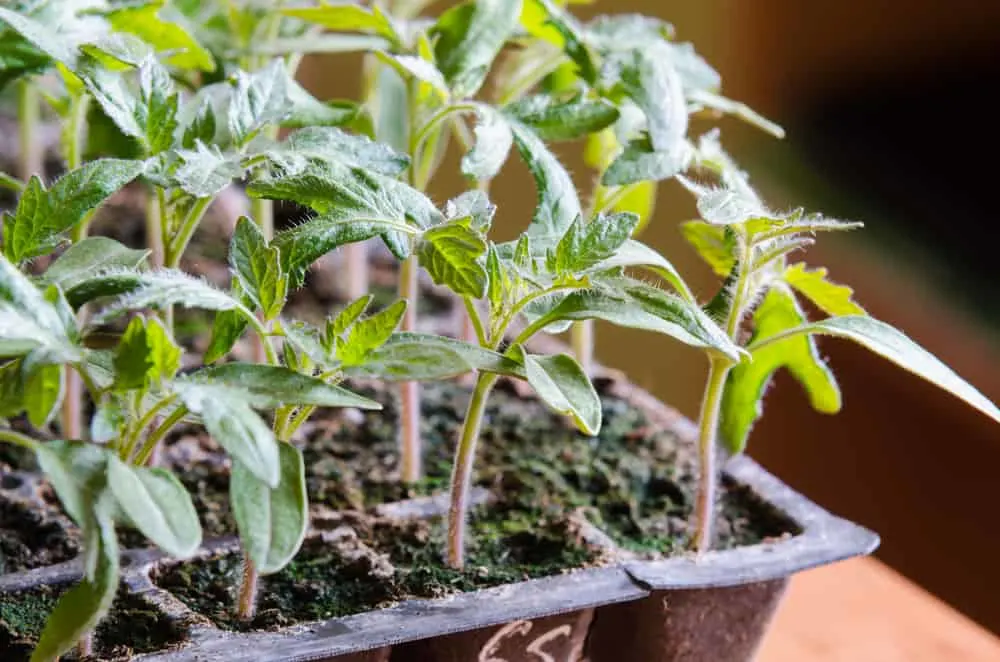
The tag may have hints as to the days to maturity. This is approximately how many days from transplant until the plant will bear fruit. When you start with small plants, this may be a slightly longer time.
If I were faced with the choice of healthy small plants versus larger less healthy plants, I would choose healthy every time.
How to Choose The Right Type Of Tomato Plant
This is where the real fun begins! Having a wish list can save you some consternation when facing the rows of gorgeous healthy tomato seedlings begging to go home with you.
Think for a moment about what you want your tomato plants for.
Snack to Your Hearts Content with Cherry Tomatoes
Do you want to pop sweet juicy cherry tomatoes into your mouth while wandering through the tomato garden?
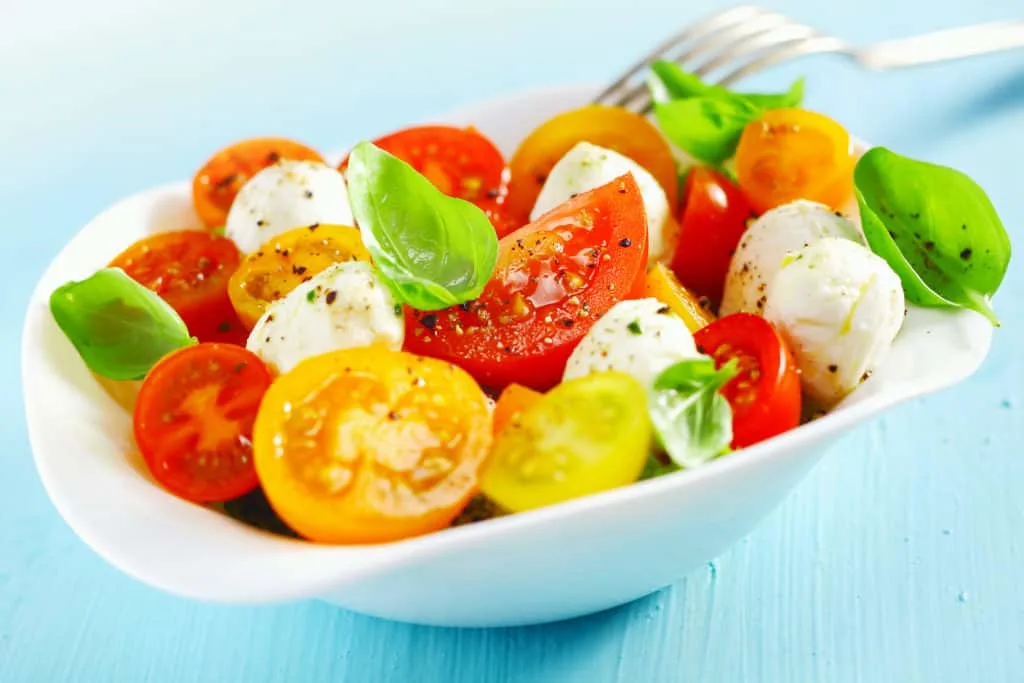
If Sauce is Your Hope, Look for Paste or Roma Tomato Plants
Are you hoping for bushels and bushels of ripe, red tomatoes for making your famous salsa or sauce?
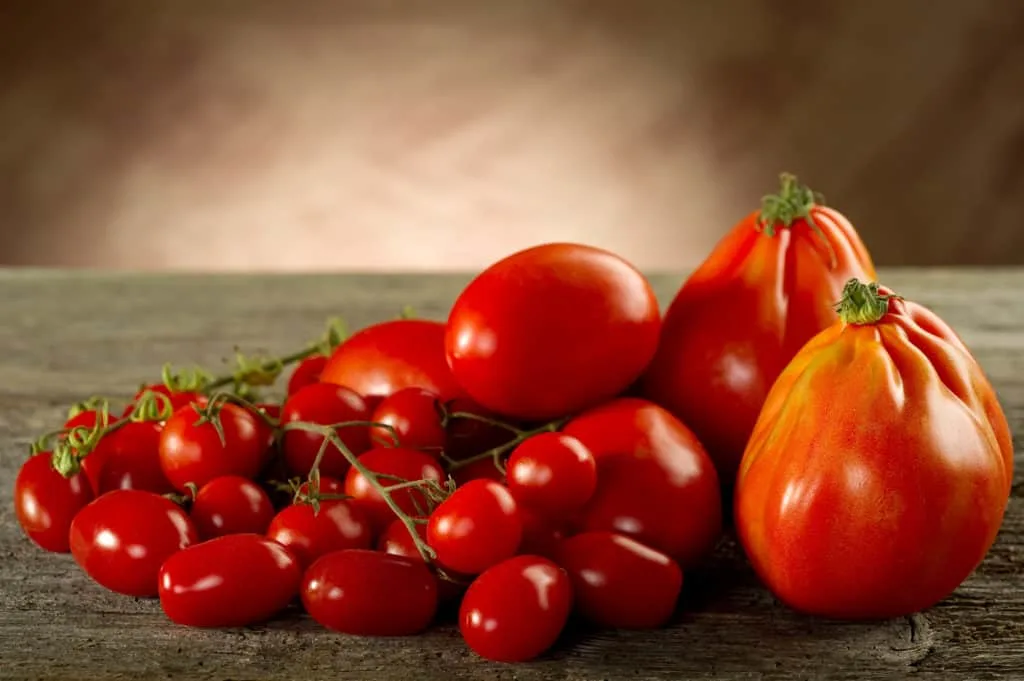
Giant Slicers and Beefsteak Tomatoes are Mealtime Showstoppers!
Maybe you want to be able to run out to the garden to grab a gorgeous giant beefsteak slicer to serve with dinners for weeks on end?
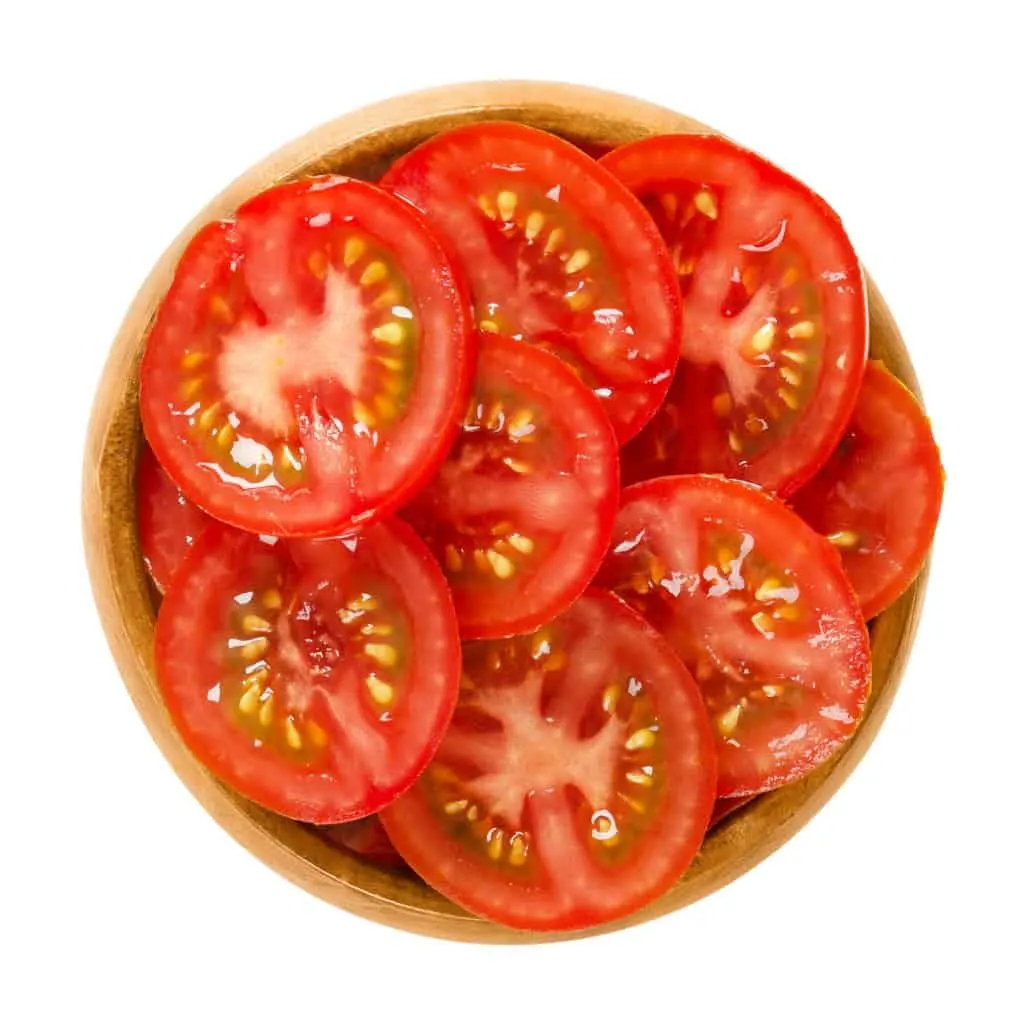
If you are like me, I answer yes to all of the above.
My tomato patch accommodates 16 indeterminate plants. I mix and match cherry tomatoes, roma-style tomatoes with large slicing tomatoes. Generally, I stick to red colored tomatoes. This is because at the end of the season, any leftovers end up in the canning pot and I want my canned tomatoes to be red. Simple as that.
I also love to experiment. This way I can keep to my tried-and-true varieties and throw a couple new ones into the mix each year.
There is No Wrong Way to Tomato!
Other people may like to have a variety of the oddest shapes and colors. There are wonderfully interesting heirloom varieties that are incredibly unique with a fantastic range of flavors to try too.
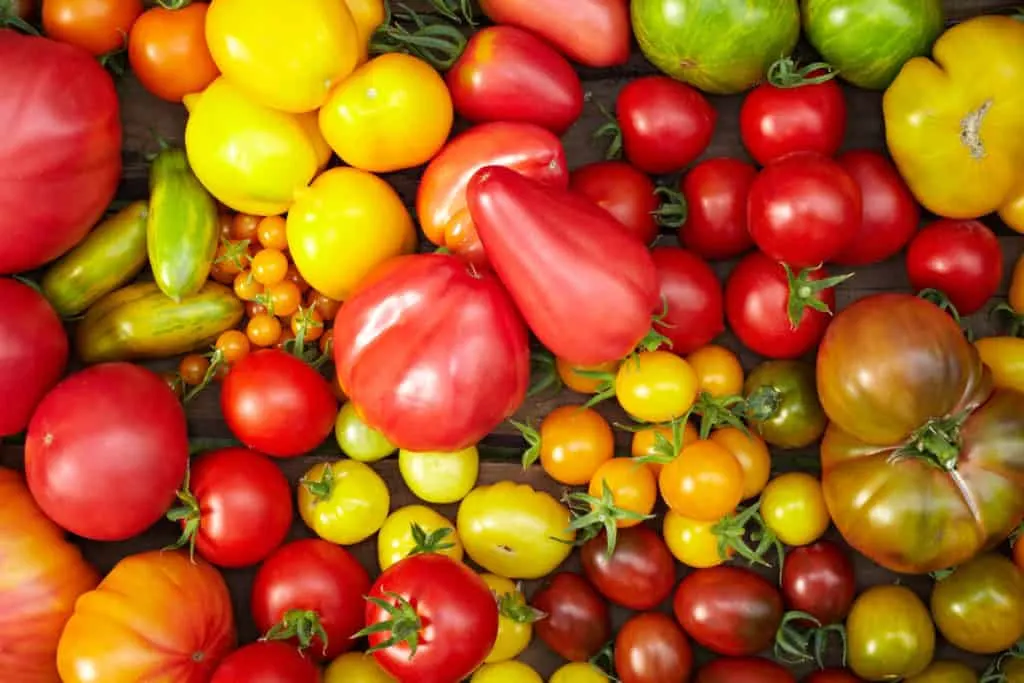
Or, perhaps you want one big harvest over a short period of time so that they can all be processed in a determined amount of time. You might look for determinate or bush tomato types to fit this request.
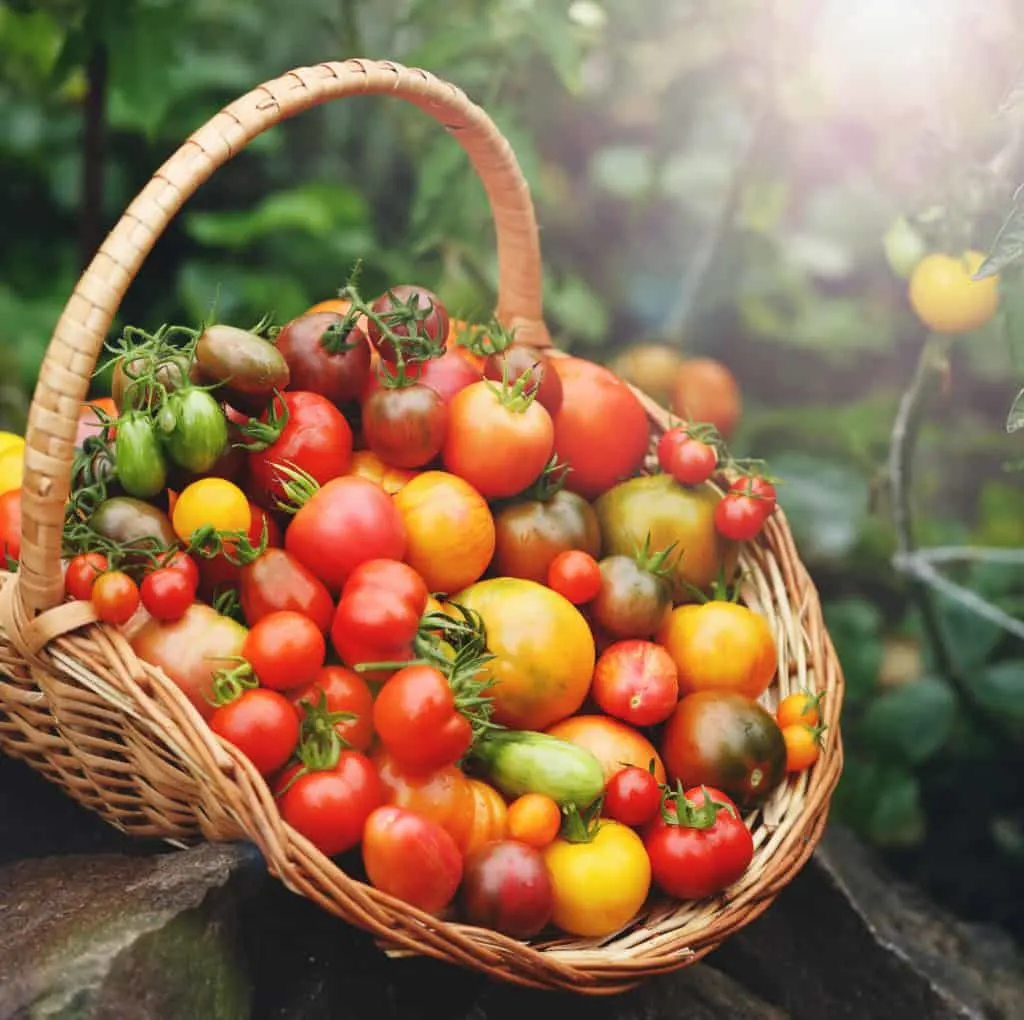
Perhaps you have a short growing season, so are looking for early season tomatoes. Early season tomatoes will have a 50 to 60 days to maturity listed on their tag. Here’s our list of the best fast maturing tomato varieties.
Keep an eye out for early season tomatoes that express the virtue of exceptional flavor. Some early season toms ripen early but lack some of the homegrown flavor we are after.
Basically, think about what it is you want. My first priority is flavor, always. Each year, I’ll try a new cherry or a new paste or roma, or a new heirloom or beefsteak to see if they might beat my previously hard-won flavor champions. I can’t wait to see how this year’s competitors’ taste!
Preparing For Success – Be Ready for Giant Tomato Harvests
Choose healthy tomato plants that will grow to a manageable size in a space that will accommodate them and where they will be easy to take care of.
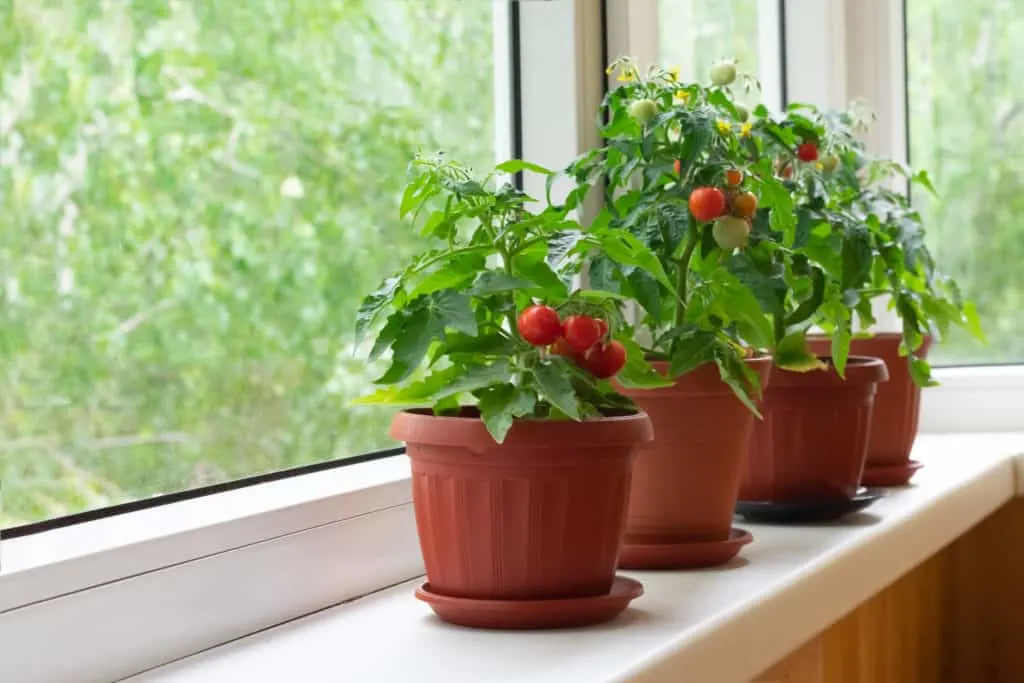
It happens to the best of us. It is incredibly easy to get over excited in the spring. Even the most experienced gardeners get overzealous in starting too many plants, purchasing too many transplants, and packing them in to the garden. Sometimes we don’t remember or plan for how big they’ll become and what they need later on. I have certainly been guilty of this.
Questions to ask yourself:
- How big will the tomato plants be at their mature size.
- How much staking will be needed?
- Are the tomato plants in an area that is easy to maintain, provide water, and keep weed free? (Even when you’d rather be at the lake or the beach in the heat of the summer?)
- If the tomatoes are in containers, are the containers big enough for the tomato plants when they are mature?
The last thing you want is to put in all the effort of picking the perfect transplants, plant them, nurture them all summer, just to let them dry out, get too big, get root bound, or overtaken by weeds. Think about how much time you can dedicate to the tomato patch at the end of the season. There are always other things to do at the end of summer.
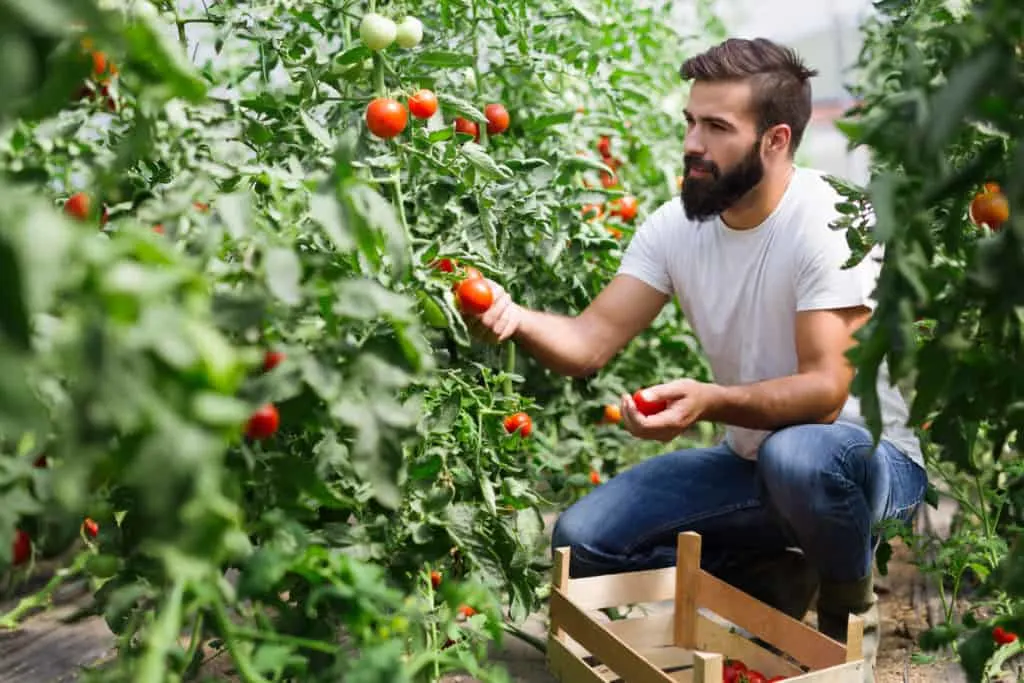
It is best to plan ahead, choosing healthy tomato plants appropriate for the time and space you have for them.
Imperfect Seedlings? What to Do?
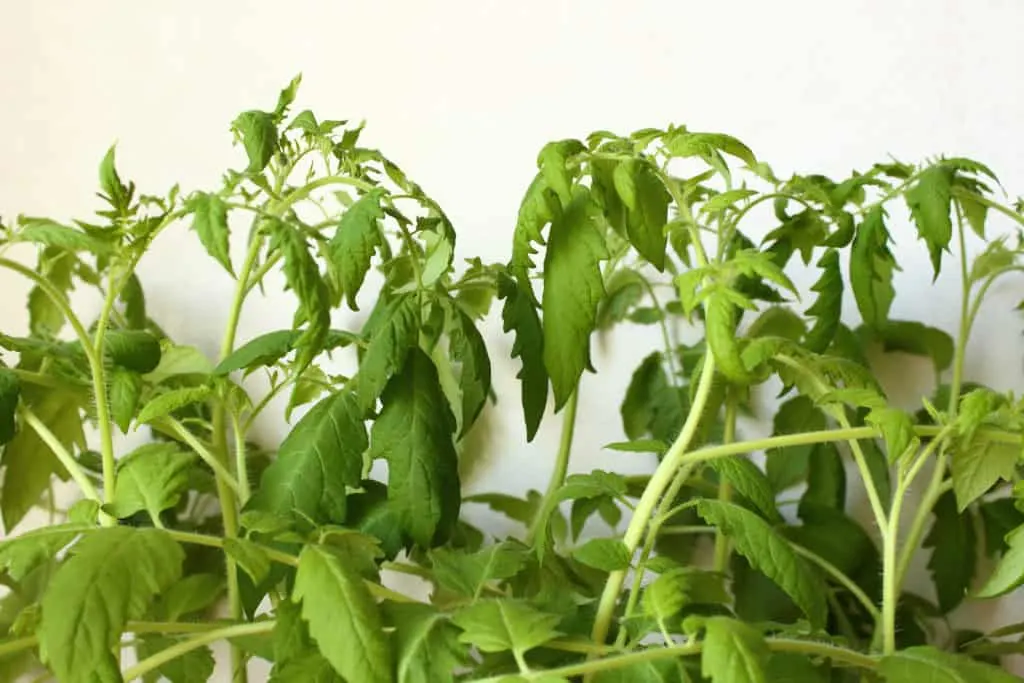
Luckily, tomatoes are incredibly resilient plants. Even with less-than-optimal plant stock, you can still grow tomatoes successfully. This may take some extra work throughout the growing season. Some extra TLC with excellent soil, a focused feeding schedule, and conscientious watering may help less-than-perfect seedlings overcome some early neglect.
Take a look at our guide here to the most common tomato seedling problems and how to fix them.
Of course, it is much better to start with healthy, well-grown tomato seedlings. Either way, we’ll go over excellent planting techniques to establish successful tomato plants in upcoming articles.
While you’re at the plant nursery, why not purchase some marigold seeds or seedlings? After all, marigolds should grow next to your tomatoes!
